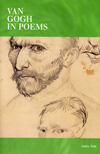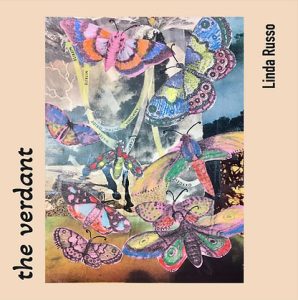Van Gogh in Poems
In the introduction to her most recent book of poetry, Van Gogh in Poems, Carol Dine writes of the research she undertook to pen her artist-inspired poems. Her book, she writes, led her to Amsterdam three times, where she visited the Van Gogh Museum to study the artist’s original work – up close. Dine describes how she was allowed to sit in a room while an attendant brought her requested works on paper. She studied them for inspiration, and deemed them holy. Her viewing of the artist’s sketchbook brought her to tears. Van Gogh in Poems contains 18 plates of the artist’s works on paper.
In the introduction to her most recent book of poetry, Van Gogh in Poems, Carol Dine writes of the research she undertook to pen her artist-inspired poems. Her book, she writes, led her to Amsterdam three times, where she visited the Van Gogh Museum to study the artist’s original work – up close. Dine describes how she was allowed to sit in a room while an attendant brought her requested works on paper. She studied them for inspiration, and deemed them holy. Her viewing of the artist’s sketchbook brought her to tears. Van Gogh in Poems contains 18 plates of the artist’s works on paper.
Writing these poems, Dine attempts a translation in words of a visual inspiration. Having written essays and poetry on other artists – Mary Cassatt and Frida Kahlo among them – the poet notes that her “relationship to Van Gogh was different from the beginning.” In a sort of attempt at poetic channeling, she images that she is writing in the voice of the artist. The poems that result are somehow inspired by the artist’s letters, sometimes by his art. Dine divides the resulting poetry into subject headings: Family, Religion, Love, Descent, and Nature.
The poems of “Family” attempt to place Van Gogh within his own family. His relationship with his patron brother surfaces most often. In “The Vicarage Garden,” Dine writes,
Named for Mother’s
stillborn son,
I draw a nest
in the wound of the bark.
My pen blackens the pollard roots.
Younger brother, Theo,
pays for the ink.
Often, Dine places Van Gogh as a subject of painted elements that represent his family; “Avenue of Poplars at Sunset” contains an epigraph presumably from one of the artist’s letters to his brother: “Dear Theo: You think that when the shadows are dark, ay, black, it is all wrong.” The artist’s words become these from Dine at the end of the poem:
Consider this: the sunset cannot be beautiful
without the hooded figure that wrestles it,
the figure darker than itself,
darker than the night.
Van Gogh’s world is often dark, often spare. Poems like “Study of a Cottage” and others from “Family,” “The Prisoners’ Round” from “Religion,” and “Stooks and a Mill” from “Nature” are sparse; but they are spare like the artist’s life must have been. Dine communicates her interpretation of Van Gogh’s experience in her words, which are image-heavy and often evocative of emotion without ever falling into the trap of being heavy-handed, which is a certain danger a lesser poet may have fallen prey to writing in a subject such as this.
Dine evokes the artist in images, sometimes through his own words, sometimes through an interpretation of his words, and often through his paintings and drawings. The poet uses color often and with purpose. In “The Prisoners’ Round,” it is green and blue; in “Portrait of Eugene Boch,” it is velvet blue and pink; sometimes, as with “Landscape with Couple Walking and Crescent Moon” from “Love,” the colors are menacing, sinister, reflecting, perhaps, Van Gogh’s own loneliness and lost chances at finding a partner. This section is prefaced with the artist’s own words; he writes, “As for ever having a wife of my own, I have no great faith in that. I am too old to go back on my steps. That desire has left me, though the mental suffering from it still remains.” In “Landscape with Couple…,” Dine’s use of color reflects Van Gogh’s suffering and loss of romantic hope:
At first there was only the cold purple mountain,
high above it, a sinister yellow moon uncurling.
The trees came next, low and billowed like clouds.
I took a step back. Then I painted myself into the landscape,
my pants, my smock, violet as the mountain.
I was cold and lonely. Loneliness does not have form.
Art, through color, is a language. In “The Bedroom” from “Descent,” the artist’s dreams are a certain color: vermilion. “Two Cut Sunflowers” is written in homage to the artist’s suicide, and his death is the green and yellow of sunflowers.
Dine’s poetry constitutes a verdant transliteration of the life and work of a vibrant, tortured artist whose decade-long progress from self-taught artist to brilliant, broken genius marks a creative flowering nearly as rapid and intense as that of John Keats, who also died a very untimely death. Dine’s work is remarkable in that it evokes what we know today as some of the most pivotal undercurrents, emotions, and events of the artist’s life. She often uses the first person “I” to speak for Van Gogh, and manages to stay well above any sort of contrived effects. Her language is spare, and it is just enough to speak to, and for, the artist’s life and heart.





